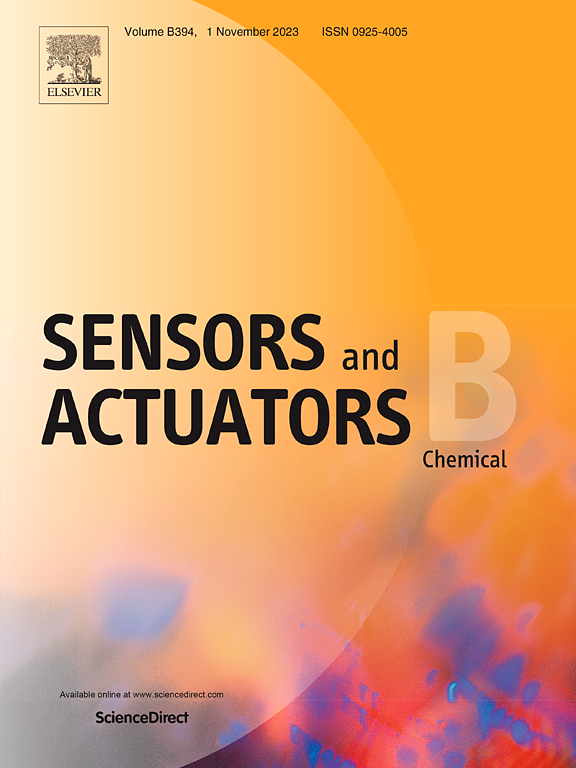A Visual Isothermal Platform for the Rapid Detection of Clostridioides difficile in Fecal Using Locked Nucleic Acid-Modified Split DNAzyme Probes Facilitated by Recombinase Polymerase Amplification
IF 8
1区 化学
Q1 CHEMISTRY, ANALYTICAL
引用次数: 0
Abstract
Early, rapid, and accurate diagnosis is of great significance for the timely treatment of C. difficile. This study constructed a visual isothermal analysis platform for C. difficile in feces based on recombinase polymerase amplification (RPA) and locked nucleic acid (LNA)-modified four sets of split DNAzyme probes, which can complete nucleic acid amplification and detection within 40 minutes. RPA technology avoids the need for thermal cycling instruments, and greatly reduces amplification time. The combination of LNA-modified probes and target nucleic acid is extremely stable, and neither temperature nor enzyme influence can dissociate it. The split G-quadruplex/hemin DNAzyme maintains its catalytic capability to oxidize the colorless substrate 2,2′-azino-bis (3-ethylbenzothiazoline-6-sulfonic acid) (ABTS2−) into its green radical form ABTS∙−. Of particular significance, LNA-modified split DNAzyme probes with the help of several enzymes in the RPA system can accurate and stable capture of target double-stranded DNA, subsequently facilitating the DNAzyme formation. This innovative approach significantly streamlines the experimental procedure by minimizing operational complexity and reducing processing time. The assay outcomes are readily discernible through direct visual observation and can be conveniently documented using a smartphone. Therefore, this method of visual detection for C. difficile established in this study has the advantages of being time efficient, and having a high sensitivity and specificity.用锁定核酸修饰分裂DNAzyme探针快速检测粪便中艰难梭菌的可视化等温平台
早期、快速、准确的诊断对艰难梭菌的及时治疗具有重要意义。本研究基于重组酶聚合酶扩增(RPA)和锁定核酸(LNA)修饰的4套分裂型DNAzyme探针,构建了粪便中艰难梭菌的可视化等温分析平台,可在40分钟内完成核酸扩增和检测。RPA技术避免了对热循环仪器的需要,并大大缩短了放大时间。lnna修饰探针与靶核酸的结合极为稳定,无论温度还是酶的影响都无法将其解离。分裂g -四plex/hemin DNAzyme保持其催化能力,将无色底物2,2 ' -氮基-双(3-乙基苯并噻唑-6-磺酸)(ABTS2 -)氧化为其绿色自由基形式ABTS∙−。特别重要的是,rna修饰的分裂DNAzyme探针借助RPA系统中的几种酶可以准确稳定地捕获目标双链DNA,从而促进DNAzyme的形成。这种创新的方法通过最小化操作复杂性和减少处理时间显着简化了实验程序。分析结果很容易通过直接的视觉观察辨别,可以方便地记录使用智能手机。因此,本研究建立的艰难梭菌视觉检测方法具有时间效率高、灵敏度和特异性高的优点。
本文章由计算机程序翻译,如有差异,请以英文原文为准。
求助全文
约1分钟内获得全文
求助全文
来源期刊

Sensors and Actuators B: Chemical
工程技术-电化学
CiteScore
14.60
自引率
11.90%
发文量
1776
审稿时长
3.2 months
期刊介绍:
Sensors & Actuators, B: Chemical is an international journal focused on the research and development of chemical transducers. It covers chemical sensors and biosensors, chemical actuators, and analytical microsystems. The journal is interdisciplinary, aiming to publish original works showcasing substantial advancements beyond the current state of the art in these fields, with practical applicability to solving meaningful analytical problems. Review articles are accepted by invitation from an Editor of the journal.
 求助内容:
求助内容: 应助结果提醒方式:
应助结果提醒方式:


